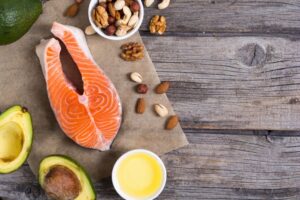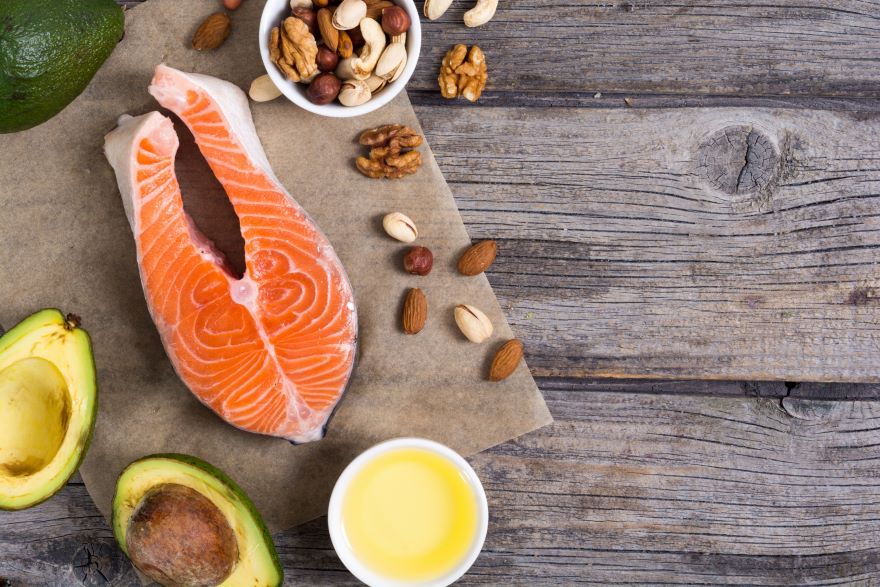The MetaBoost diet plan merges nutritional strategies with fitness routines to create a comprehensive approach for weight loss and metabolism enhancement. This diet is designed to resonate well with individuals aiming to optimize their metabolic rate, which is a key factor in the body’s ability to shed weight effectively. It emphasizes the consumption of particular foods, combined with targeted exercises, to kick-start and maintain a healthy metabolic rate.

My exploration of the MetaBoost diet plan revealed an intricate connection between what we eat and how our body processes energy. Incorporating certain ‘superfoods,’ the diet not only aids in weight management but also contributes to overall well-being. Paired with exercise strategies that leverage the body’s natural metabolic processes, the MetaBoost plan is a holistic approach to losing weight.
Key Takeaways
- The MetaBoost plan targets the metabolism to facilitate weight loss.
- It combines superfoods with specific exercises for optimal results.
- This plan is a holistic approach blending diet and exercise.
Understanding the MetaBoost Diet Plan

The MetaBoost Diet Plan is designed with a particular focus on those navigating the complexities of aging and its impact on metabolism and overall health. I understand the plan emphasizes foods that can enhance metabolic function—often referred to in diet circles as “superfoods” due to their nutrient density and health benefits.
How the Plan Works:
- Metabolic Flush: A preparatory phase to set the foundation.
- Belly Blaster: A 10-day intensive focus on abdominal fat.
- Exercise Regimen: Targeting lean muscle mass and hormonal balance.
- Meal Plan: Incorporating foods that potentially boost metabolism.
Key components of the MetaBoost Diet include a meal plan with carefully selected foods that contribute not just to weight loss, but also to sustaining energy and improving metabolic rate, especially in the context of aging. These meals align with the idea that certain superfoods may positively change attitudes towards healthier eating habits.
The exercise component is tailored to support the diet, concentrating on workouts that enhance muscle mass without being too intense, recognizing the changing needs as one ages.
The MetaBoost Connection plays a central role in this diet plan, linking all aspects of the regimen—from specific exercise routines to meal plans—ensuring continuity and synergy between diet and lifestyle changes geared towards weight loss and health optimization.
Adopting the MetaBoost Diet Plan is more than just counting calories; it’s about embracing a holistic approach to health that respects the body’s changes over time and harnesses nutrition and physical activity to work in harmony.
Foods and Nutrition

In the MetaBoost diet plan, the emphasis is on smart food choices that synergize to enhance your metabolism. The plan includes a variety of nutrient-rich foods that are known to have a positive impact on metabolic rate and health.
Spotlight on Superfoods
Superfoods in the MetaBoost diet are not just trendy; they are powerhouses of nutrition that support metabolic function. Berries and leafy greens are abundant in antioxidants, while foods such as salmon, linked with numerous health benefits, is also great for its high content of omega-3 fatty acids, which are essential for reducing inflammation. Including nuts and seeds in your diet provides not only protein but also healthy fats that can aid in maintaining a feeling of fullness and supplying steady energy. A diet rich in various vegetables supports a healthy metabolic rate due to their low-calorie density and high fiber content.
Balancing Macronutrients
It’s critical to balance macronutrients – protein, carbohydrates, and fats – for a well-rounded diet. Proteins, such as chicken and eggs, have a high thermic effect of food, meaning they require more energy to digest, thus can increase metabolic rate, making them a staple in this diet. Quinoa and legumes offer a vegetarian protein source that includes essential amino acids. Including healthy fats from sources like avocado ensures the body receives the necessary nutrients for hormone function and energy production. Beans and legumes are not only excellent sources of protein but also rich in fiber, which contributes to metabolic health. Combining these with fiber-rich fruits and a variety of vegetables ensures a diet that is nutrient-dense and satisfying.
Incorporating a well-rounded selection of superfoods and a balanced macronutrient profile can support overall metabolic health.
Effective Exercise Strategies
When following the MetaBoost diet plan, complementing proper nutrition with targeted physical activities amplifies the results. I’ll guide you through incorporating both cardiovascular and strength training exercises that can help boost your metabolism and promote muscle growth.
Cardiovascular Workouts
Cardiovascular, or cardio exercises, are essential for increasing your heart rate and burning calories efficiently. Incorporating activities such as running, cycling, or swimming can significantly enhance your basal metabolic rate (BMR), which is the number of calories your body burns at rest. For the MetaBoost diet plan, I recommend a mix of high-intensity interval training (HIIT) and steady-state cardio to optimize your time and burn more calories. Aim for at least 150 minutes of moderate-intensity cardio per week to support weight loss and improve cardiovascular health.
Incorporating Strength Training
While cardio exercises are great for calorie burn, strength training is paramount for building muscle. Muscles are metabolically active tissues, so the more muscle mass you have, the more calories you’ll burn, even while you’re not exercising. Incorporating exercises like weight lifting, resistance bands, or bodyweight exercises can help you build muscle and improve your body composition. Ensure to work on all major muscle groups at least twice a week to enhance your physical activity‘s effectiveness and support your body weight goals.
Remember, consistency in your activity levels is key. Regularly engaging in both cardio and strength training will yield the best results alongside the nutrient-rich superfoods included in your diet.
Lifestyle Factors Affecting Weight Loss

In my approach to weight loss, I recognize that lifestyle factors play a crucial role. Aiming for a sustainable transformation involves a deep understanding of how daily habits and stress levels impact my overall health.
Importance of Sleep and Relaxation
A key element to sustaining a healthier lifestyle is prioritizing sleep. Poor sleep can hinder my metabolic rate, making it harder for me to lose weight. I ensure I get adequate rest each night to support my body’s natural functions and maintain a healthy metabolic state. Relaxation, on the other hand, helps me combat stress, which is known to impede weight loss by affecting hormone levels that control hunger and fat storage. Techniques like meditation and deep-breathing exercises help me maintain calm and sustain my health and weight loss goals.
Daily Habits and Routines
I’ve adjusted my daily habits to fuel my journey towards a healthier me. Staying hydrated with plenty of water is non-negotiable—it’s a simple yet effective routine that supports metabolism and curbs unnecessary snacking. Moreover, building a habit of regular physical activity is instrumental in cultivating a healthy lifestyle. Whether it’s a walk in the park or a session of the MetaBoost Body Workout, consistency is my mantra. Lastly, I’ve learned that small lifestyle changes, such as taking the stairs instead of the elevator or prepping meals ahead to avoid processed foods, pave the path for long-term success.
MetaBoost Diet Plan Phases
As a guide to the Metaboost Diet Plan, I’ll be breaking down its systematic approach to weight loss, detailing the sequential phases designed to catalyze metabolism and promote sustainable health improvements. The plan encompasses a strategic progression through three pivotal stages: an initial metabolic activation, a period of acceleration, and a long-term maintenance phase.
Phase 1: Jumpstart
In my observation of Phase 1, Jumpstart, the Metaboost Diet Plan begins with a strict meal plan focusing primarily on lean proteins and low-carb vegetables. Lentils, for example, become a staple in this phase due to their high protein content and positive effect on metabolism. There’s also an emphasis on foods like avocado, acknowledged for their healthful fats and ability to promote satiety—a crucial element when laying the groundwork for weight loss.
Phase 2: Accelerate
As I delve into Phase 2, coined Accelerate, I see a turning point where the meal plan adjusts to further rev up metabolism. This phase retains the high-protein approach from Phase 1 but emphasizes more strenuous workout regimes. It’s here that the Metaboost Connection—a melding of dietary choices and targeted exercises—becomes more evident, designed to maximize weight loss potential and overall body toning.
Phase 3: Sustain
Phase 3, named Sustain, focuses on ensuring long-term success. This phase builds on the metabolic gains from previous stages. It transitions to a more balanced blend of nutrients while still emphasizing foods that support metabolic health. The meal plan in this stage incorporates a wider variety of foods but continues to highlight protein and fiber-rich choices conducive to maintaining weight loss.
Through these meticulously structured phases, the Metaboost Diet Plan not only facilitates weight loss but also nurtures a deeper connection between dietary habits and physical wellness.
Concluding the MetaBoost Journey

As I reflect on completing the MetaBoost journey, the importance of a sustainable approach to wellness echoes in my mind. Overcoming the challenges that arose along the way, such as resisting cravings and maintaining exercise routines, has bolstered my confidence. This program has instilled in me the value of a healthy metabolism and how foundational it is to long-term success.
Incorporating superfoods into my diet wasn’t just about variety; it was a strategic move to enhance my health. Discovering foods with significant health benefits has been enlightening. With evidence supporting the role superfoods can play for individuals managing conditions like Type 2 diabetes, my choices are now more informed and aligned with nutritional science.
Collaborating with a healthcare professional or a dietitian was a game changer. Their expertise personalized my MetaBoost experience, ensuring the changes I made were safe and benefitted my unique health profile. This professional guidance was critical, particularly during times when my motivation waned or when I needed to adjust my diet for optimal results.
Most importantly, this journey has taught me to appreciate incremental progress. The scale’s number doesn’t define me, nor does the reflection in the mirror encompass all my achievements. Instead, my sense of well-being, elevated energy levels, and newfound zest for life highlight what is truly a victory. This holistic view on health and fitness is the compass that will guide me beyond this program, as I continue nurturing my body with the care it deserves.
Frequently Asked Questions

In this section, I’ll address common queries regarding the MetaBoost diet plan, providing specific details to help you understand how the program works.
What does the MetaBoost diet involve?
The MetaBoost diet is designed to optimize metabolism, focusing on hormone balance and reduced inflammation. It includes strategic foods and exercises aimed at women over 40.
How can I download the MetaBoost meal plan?
To download the MetaBoost meal plan, you typically need to sign up at the official Svelte Training website. From there, access your member dashboard to find your meal plan and other resources.
Are there any negative reviews or common complaints about the MetaBoost program?
Like any program, MetaBoost may have mixed reviews. Some users might experience challenges adapting to dietary changes or the digital nature of the program.
What are some of the main foods recommended in a metabolic diet plan?
Metabolic diet features metabolism-boosting foods like lean proteins, complex carbs, and high-fiber options for better health.
Can the MetaBoost diet really help in enhancing metabolism?
MetaBoost diet: scientifically crafted for metabolic enhancement, focusing on nutritious foods and exercises for effective weight management.
What are ‘meta influencer foods’ and how are they incorporated into the MetaBoost diet?
‘Meta influencer foods’ are items chosen for their potential to favorably influence metabolism. They are included in the MetaBoost diet through planned meals and recipes.

*We may earn a commission for purchases made using our links. Please see our disclosure to learn more.



